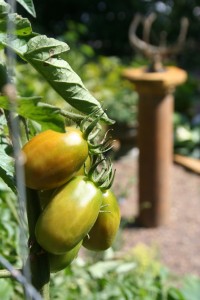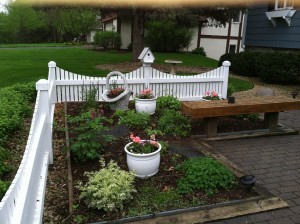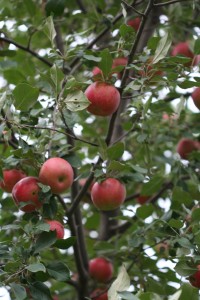13 Best Garden Tips of 2013, Part 1
No matter how long you have gardened, there’s always something new to learn. Looking over back issues of Northern Gardener and items on this blog and the one I write, I found dozens of tips that could be considered among the best garden tips of 2013. So as the old year ends and the new one begins, here are 13 that worth keeping in mind for 2014.

1) Water tomatoes with a 5-gallon pail. We’ve heard this in a couple of places. (The ones I remember are from Bobby Jensen of Grow with KARE and Eric Johnson, one of our Northern Gardener columnists.) The idea is that vegetables, especially tomatoes, need consistent watering, and one way to do that is with a 5-gallon pail. In the bottom of the pail, you drill several really tiny holes (1/8 inch or less). Set the pail in the garden near the plants that need water, then once a week, fill it up. The water will slowly seep into the ground, giving plants a steady, adequate supply of water. I tried this with a tomato bed this past season and those tomatoes did better than any other ones I grew.
2) Plant spring vegetables in mid-summer. Jackie Smith, a Carver-Scott County Master Gardener, offered this idea at a horticulture day last year. Our springs in Minnesota are short, tough and unpredictable, so skip the pain of trying to grow “spring vegetables,” such as Chinese cabbage and spinach, in spring and plant them in mid to late summer. Then, harvest the crop when the temperatures cool in fall.
3) Grow potatoes in containers. I heard about this on a garden tour in Duluth years ago, but haven’t tried it until this past year. Just plant the potatoes in a large container – I used one of those 50-gallon plastic containers – filled with compost and potting mix. The potatoes grew well and were ready for harvest early. Another side benefit: No problems with insects.
4) Bring indoor plants outside for the summer. A lot of houseplants really benefit from a summer vacation. (Check out what happened to my mom’s succulent collection when outdoors for the summer.) There are a couple of tricks. First, just as you would ease vegetable plants grown under lights to the outdoors, you need to do the same with houseplants. Give them a few days of going to a shady spot before exposing them to full sun. When they come back indoors in fall, give the pot a good bath and check them carefully for bugs.

5) Engage visitors at the front door. One of Northern Gardener’s great garden profiles of 2013 was of Heidi Heiland’s garden. The article, which appeared in the May/June issue, was full of ideas and design tips. But here’s a great one: Make sure your front door is inviting. Even if most of your gardening is out back, people will come to your garden through the front. Containers, shrubs and a nice wide path or courtyard tell your guests they are welcome at your place.
6) Search smartly when you have a plant problem. The Internet can be a scary place, full of folks trying to sell you things and people with half-baked ideas. If you think you have a plant disease, here’s a good way to make sure your Google search leads you to research-based information. Put in the symptoms or other keywords in the search box, then type “site: .edu”. This will guide you to university websites, which are most likely to have accurate information.

7) Apple cider vinegar increases your apple harvest. I had the best apple harvest ever on my Haralson tree and the cause appears to be a little jar of apple cider vinegar that I hung in the tree as part of a University of Minnesota research project. (The project had nothing to do with apples.) A knowledgeable plant person speculated that the vinegar attracted bees to the tree, resulting in better pollination that in the past.
Tune in tomorrow for the rest of our best garden tips for 2013.
—Mary Lahr Schier

One Comment
-
Pingback: Effective Watering Strategies for Northern Gardeners - Minnesota State Horticultural Society
Back to Blog